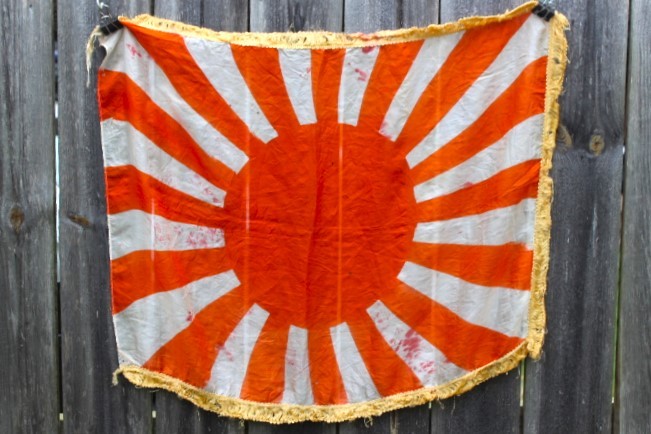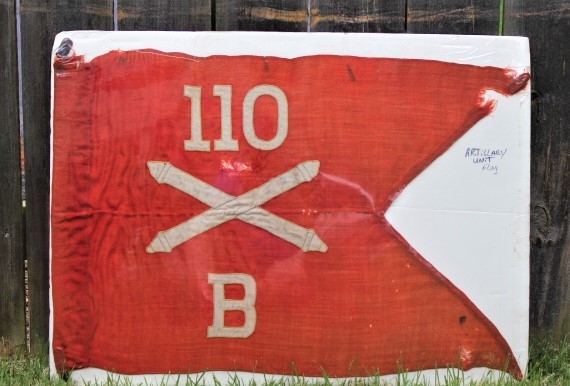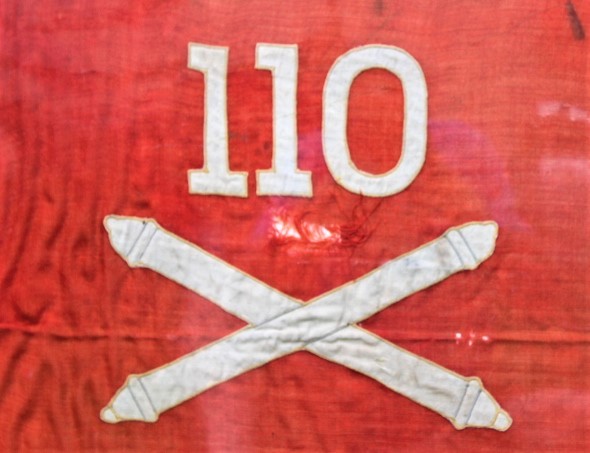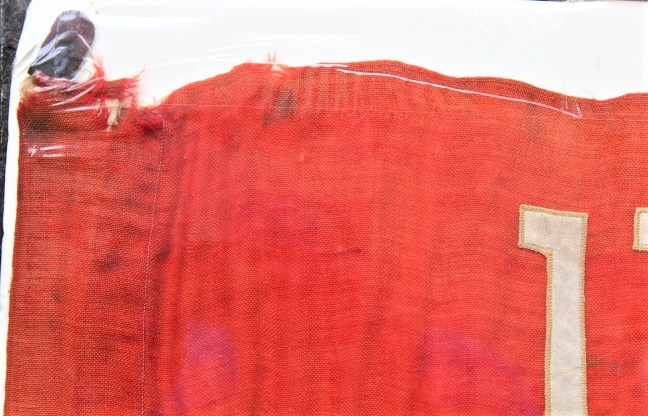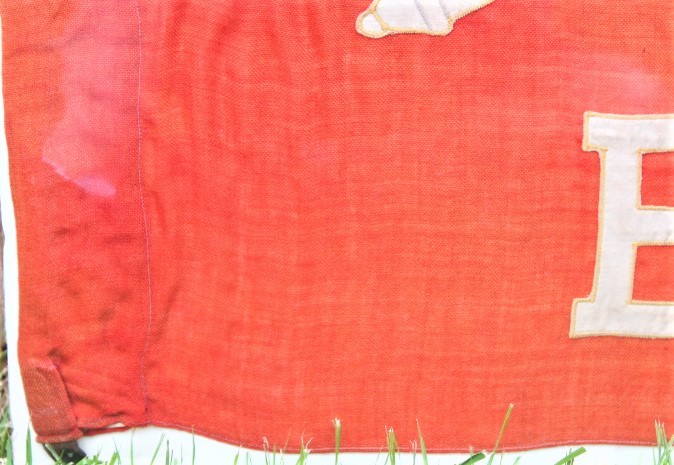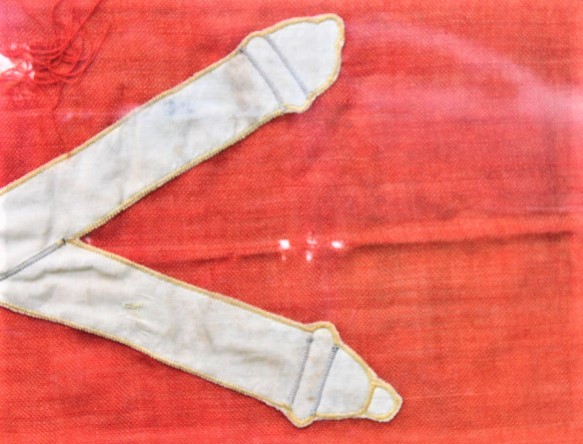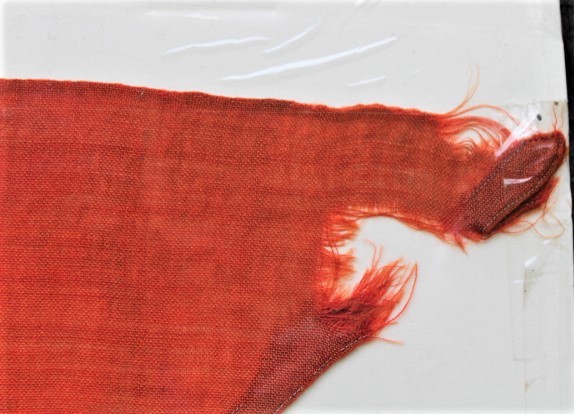WWII Battery B 110th Field Artillery Battalion 29th Division Guidon
Item #: WR769
This is a US Army guidon for Battery B, 11oth Field Artillery Battalion, 29th Infantry Division used during World War II. Guidons were first introduced to the US military in 1834, and were used by dragoon units only. The top half of the guidon was red, the bottom half white. The shape of the guidon caused it to be called a "swallow tail" flag. The letters U.S. were stitched in white against the red background, with the company letter stitched in red against the white background. In 1862 changes were made with guidons, dragoon, now referred to as cavalry units, kept the same shape, but were no longer red and white. It was instead changed to a stars and stripes pattern. This design would remain in place until 1885, when the colors reverted back to red and white. In 1886 artillery units were authorized to carry guidons. In 1904 the Army standardized the guidon colors, the artillery now used a scarlet flag with yellow crossed cannons, eventually adding the regimental number and battery letter. This guidon measures 29" from the hoist to the tips of the swallow tail fly, and is 19" along the hoist. The wool bunting material is red, with a white material used for the cannons, battalion number and battery letter. They are sewn onto the flag with yellow thread. There are a couple of holes in the material near the top of the hoist, the upper swallow tail, under the battalion number and along the edge at the lower swallow tail. The leather tabs at the top and bottom of the hoist are still in place. The 110th Field Artillery Regiment was formed in November, 1917, when the 1st Maryland Artillery consolidated with several District of Columbia artillery units. It was then attached to the newly formed 29th Infantry Division. The 110th was again inducted into federal service on 3 February, 1941 along with the rest of the 29th Division. In March, 1942, the 110th Artillery Regiment was broken up into two independent artillery battalions, the 110th and the 224th. The 110th served the remainder of the war as the direct fire support unit for the 115th Infantry Battalion of the 29th Division. Battery B, along with the rest of the 110th Field Artillery battalion, landed on Omaha beach on the early morning hours of 7 June, 1944. The battery was moving off the beaches later that evening when they were halted by traffic in the middle of the town of Vierville. They came under German artillery fire, and several of the battery's vehicles and two of their 105mm howitzers were hit by shrapnel. The 110th would provide fire support for the 115th Infantry during the defense of St. Lo against repeated German counter attacks. On 29 September 29, 1944, B Battery would fire it's first round into Germany. I can not tell for certain, but I believe this guidon is one sided, and quite possibly theater made. It displays well, and represents a hard fighting artillery unit that can trace it's history back to pre World War I.
(Sold)
Sorry we are not accepting on line orders at this time. If you are interested in an item please contact me at 615 717 7792 or email me at mwkiser07@gmail.com.
If you have ordered or are considering ordering an antique weapon or artifact from our website please be advised that these artifacts and antique weapons are sold strictly as collectible antiques.
We strongly recommends that these artifacts be enjoyed and appreciated for their historical significance and not ever fired. By ordering you are acknowledging these facts, warnings and assume full responsibility for your personal actions with regard to them.
We DO NOT sell modern firearms , all our inventory is pre 1898 and are classified by the ATF as antiques and require no government paperwork to own.
